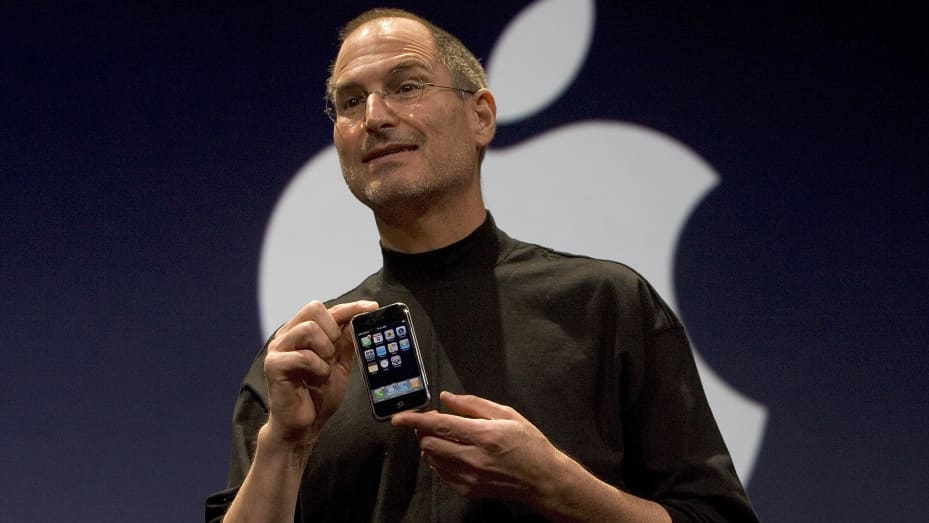The headset, according to reports, will feature high-definition screens in front of the user’s eyes. But it could also let users see and interact with the real world through high-powered cameras mounted on the device, a trick sometimes called passthrough or mixed reality.
Apple is launching its headset as the broader virtual reality industry sifts through what’s been called a trough of disillusionment.
“Although the lackluster uptake of the AR/VR market and the transitory enthusiasm about the Metaverse create a backdrop of challenges, it is instructive to remember that Apple invents entire new categories that have the potential to disrupt existing markets and create entirely new markets,” Bank of America analyst Wamsi Mohan wrote in a recent note.
When Facebook rebranded as Meta in October 2021, it drew attention to VR and the metaverse headsets could enable. But since then, sales for existing VR headsets haven’t been great, usage has been worse and the anticipated explosion in successful VR software companies hasn’t happened.
Augmented reality, a related technology that shows computer graphics through pricey, specialized transparent lenses, has also failed to thrive. Microsoft’s Hololens, announced in 2014, had a high-profile deal to make headsets for the U.S. Army, but it recently stalled. The most visible AR startup, Magic Leap, has changed management and refocused from making a consumer-oriented gaming device to developing a tool for a small set of industries.
Apple’s headset is expected to be more powerful than what’s out there — even current $6,500 VR headsets. It’s expected to have a 4K resolution screen for each eye and a powerful Apple-designed chip, according to TFI Securities analyst Ming-Chi Kuo.
It could also be pricey, retailing for as much as $3,000, according to a note from TD Cowen analyst Krish Sankar, and could only sell in the hundreds of thousands in the first year. By way of comparison, the Apple Watch sold millions in its first year.
But many people in the industry believe Apple’s announcement will energize consumers and software developers and bring the technology closer to its ultimate promise: a headset you wear daily, as you go about your business, or perhaps a pair of lightweight glasses, helping you with contextual information.
“It’s good to see others get into this business, particularly Apple, who doesn’t jump into markets too early,” Magic Leap CEO Peggy Johnson told CNBC. “That is a huge validation of what we have been doing to date, and we welcome that, because it’s also good for the ecosystem.”
Here’s why Apple could succeed where everybody else has failed.
Apple breaks products into the mainstream
Apple seldom invents something unprecedented. Instead, it takes existing ideas and refines them in critical ways that make them a lot more appealing to consumers.
Before the iPod, there were several hardware MP3 players in the market. Before the iPhone was released, the Blackberry had merged a wireless cellular internet connection and pocket computer into what is still called a smartphone, and other companies were building smartphones based on Microsoft’s Windows Mobile system. When Apple released the Apple Watch, there were many other smartwatches on the market, chasing a concept that had been around in cartoons and science fiction for decades.
Historically, Apple uses its significant consumer brand and hefty marketing budget to explain to consumers why they need its latest gadget.
“Apple has a trust and a granted entitlement that no one else has, and they’ve earned it,” said Jarrett Webb, a technology director at Argodesign who develops mixed-reality apps. “They have this leadership position and this poise to help define, and give confidence, to this new form of computing.”
The best example of this was at the original iPhone launch. Steve Jobs, founder of Apple and CEO at the time, described the new device as a combination of three things: an internet communications device, an MP3 player and a phone.

The late Apple CEO Steve Jobs unveiling the first iPhone in 2007.David Paul Morris | Getty Images News | Getty Images
The language may be dated now. The clunky phrase “internet communications device” transformed into “there’s an app for that” quickly. But it still showed how Apple can quickly slim down a pitch for a new gadget into terms consumers understand.
For now, the world of headset technology is confusing and has no clear use cases. Industry practitioners spend a lot of time explaining the differences between augmented, virtual and mixed reality. If Apple can demystify the whole industry for the public, it could end up with the first headset mainstream consumers understand and want.
Plus, Apple has about 34 million developers for its current phones. That’s a huge resource Apple could encourage to build the killer app that would turn its headset into a must-have.